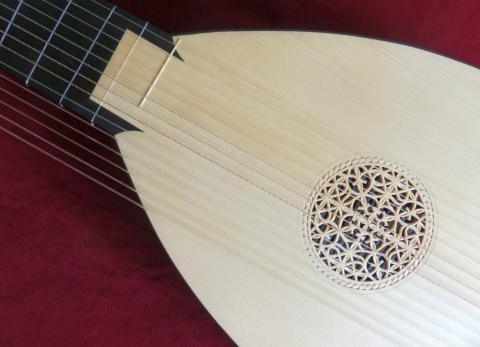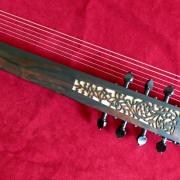The French theorbo is a rather late development of the instrument started by the Italians and called Chitarrone. The early Italian models have 6 courses on the fingerboard and usually 8 open bass strings. This started to shift in the mid 17th century. There is the famous instrument by Koch (Venice 1650) in the Berlin Museum with 7 double courses and 7 bass strings. The French theorbo came towards the end of the 17th century and was used for solo and continuo playing. It is single strung throughout with 8 strings on the fingerboard and 6 basses. This makes is possible to play low cromatic bass notes like F# or Ab, common in the music playing Basso continuo lines, without getting up all the time to re-tune the bass strings.
The Italian instruments were quite big, usually between 86 cm and 100 cm for the stopped strings. Therefore the two top courses had to be tuned down an octave in order to avoid the breaking point of gut strings. This French theorbo has a string length of 81 cm and most of the time I string it with just the top string down the octave. This allows me to take bass lines in chamber music much higher. The basses are 160 cm, giving a very nice full sound. The instrument is strung in gut, using Lux-lines as strings 6-8, all by Kürschner, which I find the most reliable and durable gut strings for lutes.






